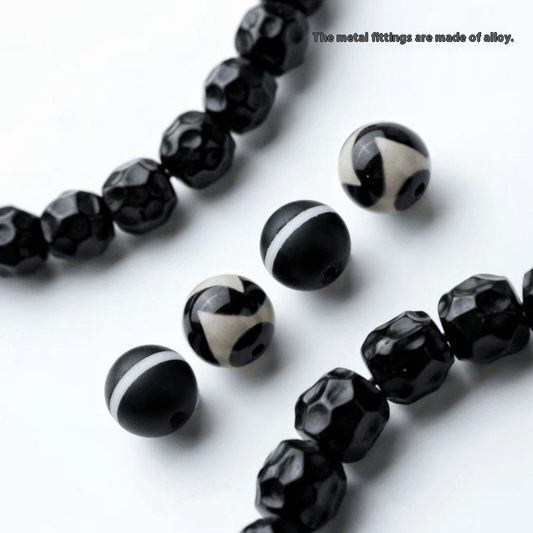
Amid the detailed mesh inside Tibetan faith systems are found two profound relics: the vivid thangka and holy bodhi talisman. Every one, in its special manner, acts as a gateway for transcendental understanding. The thangka, a vibrant painting, depicts deities, mandalas, or scenes from Buddhist lore, acting as a visual aid for meditation.
In contrast, the bodhi bead, often crafted from fine gems, planks, fruit stones, or bone, is a tangible reminder of Buddha's realization under the bodhi tree. Employing the beads assists in mental stillness.
- Mutually, the thangka and the bodhi bead express the interconnectedness of art and spirituality. They offer a tangible link to the sacred teachings of Tibetan Buddhism.
Tales Whispered by Camel Bone
Over ancient epochs, ancient treasures whisper tales relating to a world long forgotten. These are not treasured objects of shadowed empires, but plain camel bones carved with emblems that preserve the secrets of a bygone generation. Single shards carry the echo from a life lived, a journey navigated, and a connection to the sacred wisdom embracing which encompasses us all.
- Such objects
- Relics
- Symbolize
Interpreting the Visual Narratives of Thangka
Tangkas are captivating paintings on canvas, meticulously crafted by Tibetan artists to depict revered figures and scenes from Buddhist philosophy. Each detail within a thangka is laden with significance, forming a complex tapestry of visual narratives that guide the viewer on a contemplative journey. The chromatics used in thangkas are not merely aesthetic choices but carry intrinsic connotations, embodying different aspects of the Buddhist doctrine. From the peaceful figures to the intricate decorations, thangkas offer a look into the rich world of Tibetan Buddhism, inviting us to meditate upon its truths.
- Established thangka art often depicts key Buddhist figures such as Buddha Shakyamuni, Bodhisattvas like Avalokiteshvara and Manjushri, and enlightened beings from various factions of Tibetan Buddhism.
- Throughout these representations lies a wealth of wisdom that can be understood by those who analyze the symbolic language of thangkas.
Enlightened One's Path to Enlightenment: Embodied in Beads and Bone
Upon the winding way to transcendence, the Buddha exercised symbols imbued with profound meaning. Each bead and bone held within them the substance of his instruction, presenting glimpses into the form of reality. Using their appearance, the Buddha expressed profound insights that surpass the realm of ordinary perception.
From chosen reflective beads, crafted from special materials, emerged vibrations that echoed with the vibrant energies within. The bone of a being, meticulously transformed into talismans, served as tangible emblems of the impermanence innate to all phenomena.
Thangkas: Windows into Himalayan Spirituality
Thangkas colorful paintings on cloth serve as powerful representations of Himalayan spirituality. These intricate works of art, meticulously created with artful brushstrokes, depict a vast array upon Buddhist deities, mandalas, and scenes from holy scriptures. Each thangka is an instructive medium for meditation and contemplation, offering insight into the intricate teachings of Buddhism.
- They are often used in ritual ceremonies as part of
- reflecting states of spiritual insight.
- Thangkas act as not merely decorative items but rather views into the rich and mesmerizing world of Himalayan spiritual traditions.
The Essence of Bodhi Beads: Cultivating Mindfulness and Compassion
Each orb on a bodhi bead mala whispers tales of ancient wisdom, guiding us on a journey through the tranquil waters of mindfulness. As we handle these intricately created beads, our fingers trace the contours of singular one, anchoring our cognition in the present moment. The gentle mass of the beads against our palms serves as a tangible reminder to breathe, fostering a sense of composure.
- Every time bead that passes between our fingers, we promote compassion, extending it first to ourselves and then outward to the world.
- Buddhism teaches us that mindfulness is a discipline that requires patience and endurance.
Utilizing the rhythmic repetition of mantra or simply the mindful noting of the beads, we detach from the relentless chatter of the mind.
The practice making use of bodhi beads is a beautiful invitation to re-engage our connection with ourselves and the world around us.
Unleashing Intention: Creating a Camel Bone Bracelet for Enlightenment
Focus represents a compelling drive in our lives, shaping our experiences and guiding us towards our ultimate purpose. When we combine this intention with the old knowledge of crafting a camel bone bracelet, we create a potent synergy that can intensify our spiritual growth.Camel bone exudes mystical power, representing strength. Its natural beauty and classic appeal serve as a constant reminder of the divine force within each of us.By scrutinizing each piece, pour intentions into the design. With every knot or stitch, we implant our hopes, dreams, and aspirations for spiritual evolution. This act of creation becomes a meditative practice, connecting us with our inner wisdom and guiding us on a pilgrimage of understanding.- Allow the bone’s pigments to mirror your sacred objectives.
- Imagine your dreams threading through each crafted segment.
- Charge the completed bracelet under the moonlight or sunlight to amplify its energetic properties.
The Fascinating Story of Camel Bone in Buddhism
In the rich tapestry surrounding Buddhist tradition, artifacts often hold profound symbolic meaning. Amid these varied objects, camel bone stands out as a singular and intriguing element. Throughout history, this material has been adopted in the crafting during various Buddhist items, each imbued with specific symbolisms.
- Recognized as a symbol of resilience and strength due to the camel's ability to persist in harsh environments, camel bone often stands for spiritual fortitude.
- Likewise, the color and texture of camel bone are believed via some to hold auspicious connotations, signifying purity and serenity.
Thereupon, camel bone has become a meaningful part of Buddhist culture, serving as a tangible bond to the profound teachings transmitted through this ancient faith.
Thangka Works: Stories of the Divine
Within the ethereal realm of Tibetan Buddhism, Thangka paintings emerge as sacred portals to enlightenment. These exquisite works, meticulously crafted by skilled artists known as thangkapa, depict a myriad featuring vibrant deities, celestial beings, and mythical creatures. Each brushstroke imparts profound spiritual significance, narrating ancient tales and philosophical ideas.
- Including a vast compendium of Buddhist iconography, Thangkas serve as both devotional objects and instructional tools. Dedicated practitioners gaze upon these paintings during rituals and meditations, seeking to achieve spiritual wisdom.
- Luxuriously ornamented with intricate details alongside a multitude of vibrant hues, Thangkas are considered windows into the divine. Every painting acts as a symbolic representation of the Buddha's teachings and the path to liberation.
With the aid of their forceful imagery and symbolism, Thangka paintings offer a glimpse into the rich sacred traditions of Tibet. They are a testament to the enduring elegance of Tibetan art and its profound ability to illuminate.
Embracing the Duality: Thangkas and the Cycle of Life and Death
Thangkas, the richly painted Tibetan scrolls, present a deep contemplation on the ephemeral character of existence. Each intricate drawing depicts deities and beings engaged in the evolving venture of life and death, a mosaic of birth, growth, impermanence, and revival. The artists skillfully blend these concepts within the thangka's territory, highlighting the balance of all things. Through vivid figures, they invite us to ponder on our own presence. The cycle continues, a pattern of coming and going, pointing out the preciousness of each moment. By embracing this duality, thangkas teach us to cherish the beauty in both life's joys and sorrows.Bands of Faith: The Significance of Bracelets in Buddhist Practice
In the intricate tapestry of Buddhist practice, seemingly straightforward objects often hold profound meaning. Among these are bracelets, which serve as tangible tokens of devotion and commitment to the principle of Buddha. Worn on the wrist, a bracelet performs as a constant reminder of one's aspirations and aspirations. It can stand for the impermanence of life, fostering practitioners to remain grounded in the present moment. Some bracelets may feature sacred inscriptions, such as mantras or the names of Buddhas, which are considered to draw in positive energy and preservation. Others might be made from resources with spiritual significance, like sandalwood or lotus seeds, enriching the bracelet's potency. Ultimately, the significance of a Buddhist bracelet lies far beyond its physical form. It becomes a powerful tool for contemplation, a catalyst to live in harmony with the teachings of Buddha, and a wellspring of one's Buddhist prayer beads unwavering belief.